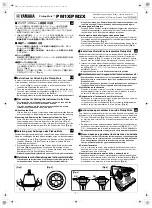
Notes:
If your pet stays within its boundary:
a) Praise your pet verbally for staying
inside its boundary.
b) Slap the flag 3 times and say NO!
with authority.
c) Run toward the safe area and
PRAISE!
If your pet crosses its boundary:
a) Pull your pet out of the signal field.
b) Slap the flag 3 times and say NO!
with authority.
c) Run toward the safe area and
PRAISE!
Days 2 & 3:
Supervision Phase
1. Have collar on prior to taking your pet outside. Begin with steps 3 and 4 as above.
2. Increase the amount of time your pet wears the receiver collar in the house. Take
receiver collar off at night.
3. Continue to boundary train, flag train, and perimeter walk your dog. During this first
week the dog must be contained at all times while outside (except during training
sessions).
4. If he chooses to disregard flags and warnings,
allow
your dog to make a mistake and
get a correction.
Days 4 - 7:
Proofing Phase
1. When your pet obviously and consistently avoids the flags, introduce distractions to
test his training, making sure he remains in the safe space despite any temptation
beyond the flags. This process is called “proofing.”
2. It may be helpful to have a second person perform this part of the training while you
remain with your pet. Without calling your pet’s name or saying, “come,” this person
should try to entice your pet across its boundaries. This can be done by doing various
things of interest to your pet such as throwing a ball or stick across the signal line and
then running after it, or simply standing across the signal line.
Be very interesting, but DO NOT make eye contact.
DO NOT let your pet run into and through the signal field. If he looks as if he is
about to cross his boundary, firmly tell him NO! and then pull him back. The person
across the boundary line should also say NO! and shake a flag.
30
Summary of Contents for DG9000
Page 1: ...Revised May 2001 Installation Training Guide...
Page 9: ...Grounding to a Ground Rod 6...
Page 39: ...Notes 36...
Page 40: ...Notes 37...
Page 41: ...Notes 38...









































